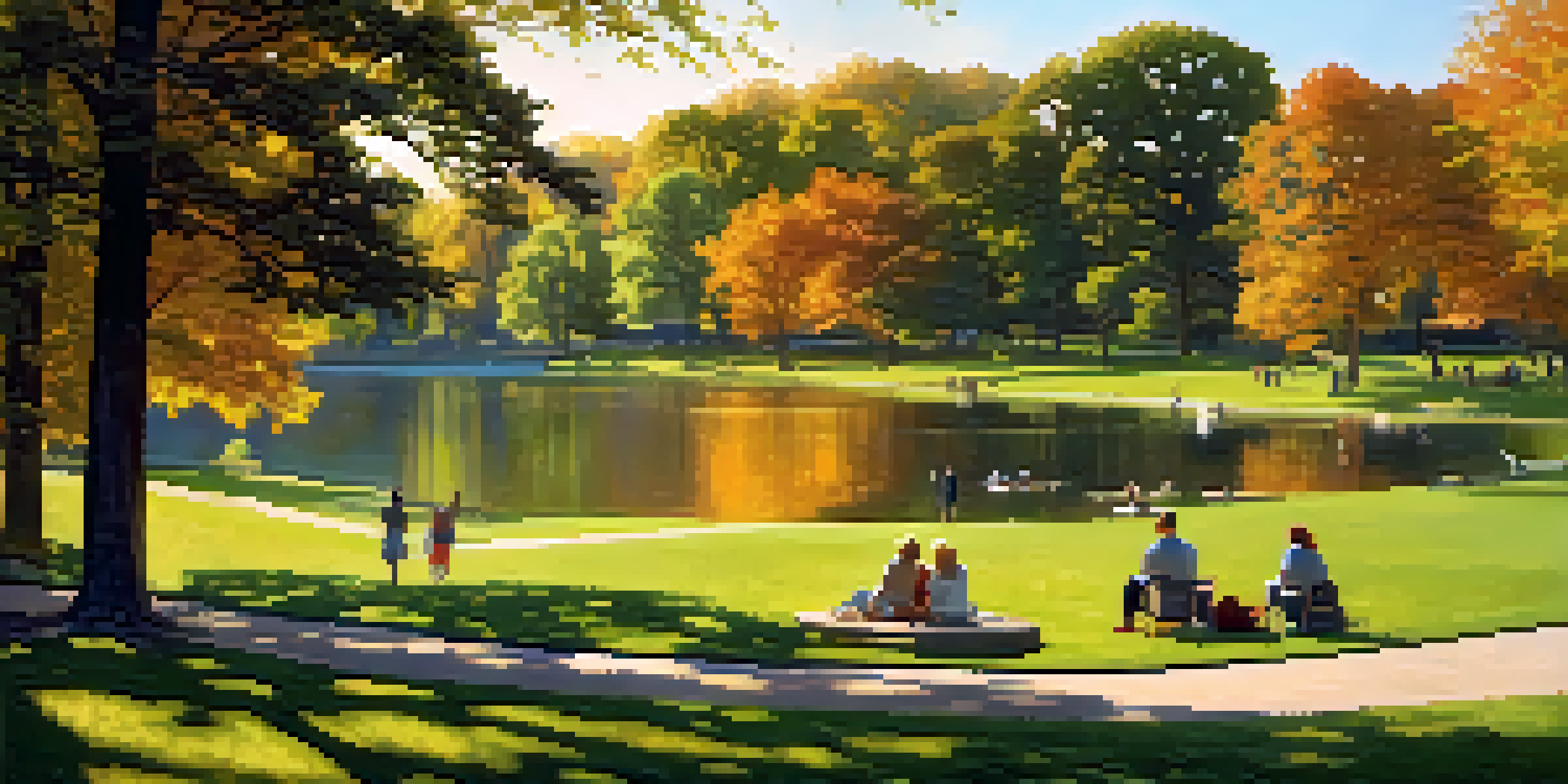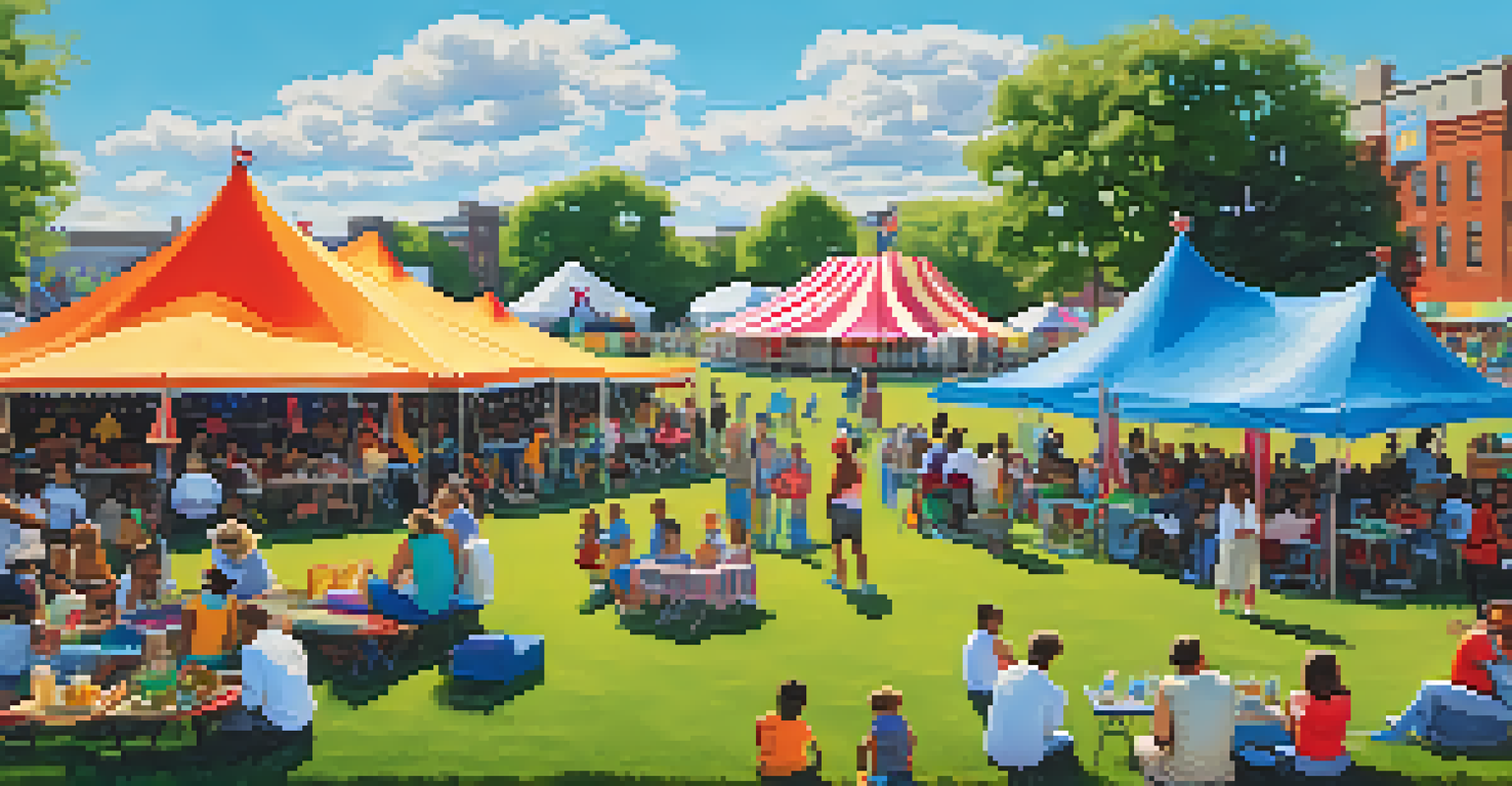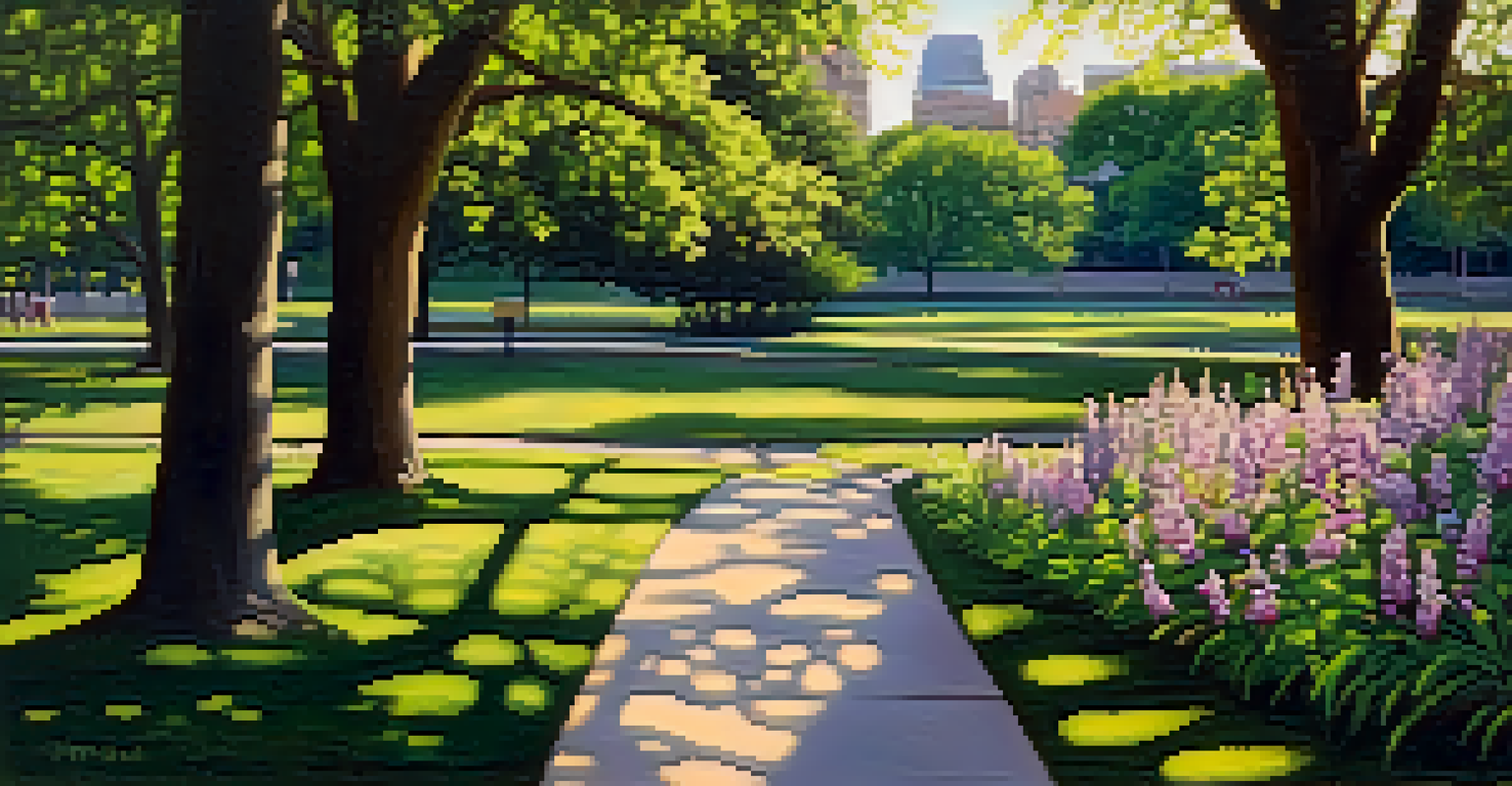Buffalo Parks: A Historical Perspective on Urban Green Spaces

The Birth of Buffalo's Urban Parks: A Historical Overview
Buffalo's urban parks have a fascinating history that dates back to the early 19th century. As the city grew, the need for green spaces became apparent, leading to the establishment of several parks. The visionaries behind these parks aimed to provide residents with a natural escape from the bustling city life, fostering a sense of community and well-being.
The park is a place where a person can find themselves, surrounded by nature and the simple joys of life.
The first major park, Delaware Park, was designed by the famous landscape architect Frederick Law Olmsted in 1868. Olmsted believed that urban parks were essential for public health and happiness, and his work in Buffalo reflects this philosophy. The park's expansive lawns and serene lakes continue to be a cherished retreat for locals and visitors alike.
Over the years, Buffalo's parks have evolved, welcoming diverse activities and events. From leisurely strolls to vibrant festivals, these green spaces have become integral to the city's culture and identity. Understanding their historical significance helps us appreciate the role they play in our daily lives.
The Role of Frederick Law Olmsted in Buffalo's Park Design
Frederick Law Olmsted, often hailed as the father of American landscape architecture, had a profound impact on Buffalo's park system. His innovative designs emphasized natural beauty and accessibility, blending landscapes with urban life. This approach not only transformed the city’s parks but also set a standard for urban planning across the nation.

Olmsted's work in Buffalo includes not just Delaware Park, but also the beautiful Olmsted Parks System, which encompasses several other parks. Each park is a testament to his belief that nature should be an integral part of urban living. His designs encouraged social interaction, recreation, and a connection to nature, which were revolutionary ideas at the time.
Olmsted's Legacy in Buffalo Parks
Frederick Law Olmsted's innovative designs established a park system that emphasizes the integration of nature into urban life.
Today, Olmsted's influence is evident in how these parks are used and cherished by the community. They serve as venues for family gatherings, sports events, and cultural celebrations, all of which foster a strong sense of belonging and pride among Buffalo residents.
Parks as Community Hubs: Fostering Social Connections
Buffalo's parks are more than just green spaces; they serve as vital community hubs. They provide residents with a place to gather, socialize, and engage in recreational activities. This sense of community is especially important in urban settings where people often seek connection amidst the hustle and bustle of city life.
In every walk with nature one receives far more than he seeks.
Events like community picnics, farmers' markets, and outdoor concerts are commonplace in these parks. They not only promote local culture but also encourage residents to come together and strengthen their ties. The shared experiences create lasting memories and friendships that enrich the community fabric.
Moreover, parks offer a safe and welcoming environment for people of all ages. Whether it's children playing on the swings, families enjoying a picnic, or seniors taking a leisurely walk, these spaces cater to everyone. This inclusivity is a fundamental aspect of what makes Buffalo's parks so special.
The Impact of Urban Parks on Mental Health and Wellbeing
The mental health benefits of spending time in nature are well-documented, and Buffalo's parks are no exception. Access to green spaces has been linked to reduced stress, improved mood, and enhanced overall well-being. For many residents, these parks provide a much-needed escape from daily pressures and a chance to recharge.
Studies show that simply being in a natural environment can lower cortisol levels and promote feelings of calm. Buffalo's parks, with their beautiful landscapes and serene settings, offer the perfect backdrop for relaxation and reflection. Whether it’s a quiet moment by the lake or a walk among the trees, the restorative power of nature is undeniable.
Parks as Community Gathering Spaces
Buffalo's parks serve as vital hubs for social interaction, hosting events that strengthen community ties and promote local culture.
Furthermore, engaging in physical activities such as jogging, yoga, or cycling in these parks contributes to both physical and mental health. The combination of exercise and nature creates a holistic approach to wellness that benefits the entire community. Buffalo’s parks truly embody the idea that green spaces are essential for a happy, healthy life.
Conservation Efforts: Preserving Buffalo's Green Spaces
As urban development continues to rise, the conservation of Buffalo's parks has become increasingly important. Local organizations and community advocates are working tirelessly to protect these valuable green spaces from encroachment and neglect. Their efforts highlight the need for sustainable practices that prioritize the health of both the environment and the community.
Initiatives such as tree planting, habitat restoration, and educational programs are vital in preserving the ecological integrity of these parks. Involving the community in conservation efforts not only fosters a sense of ownership but also educates residents about the importance of maintaining these natural treasures for future generations.
Moreover, partnerships between city officials, non-profits, and volunteers play a crucial role in ensuring these parks remain vibrant and accessible. By working together, the community can safeguard the beauty and functionality of Buffalo's parks, ensuring they continue to thrive as essential urban green spaces.
The Future of Buffalo Parks: Challenges and Opportunities
Looking ahead, Buffalo's parks face a range of challenges, including climate change, funding limitations, and urbanization. However, these challenges also present opportunities for innovation and improvement. With thoughtful planning and community involvement, Buffalo’s parks can evolve to meet the needs of future generations while preserving their historical essence.
Embracing new technologies and sustainable practices can enhance park management and visitor experiences. For instance, incorporating smart technology for efficient maintenance or developing programs that engage youth in stewardship efforts can breathe new life into these spaces. Such initiatives not only preserve the parks but also foster a culture of environmental responsibility.
Mental Health Benefits of Green Spaces
Access to Buffalo's parks contributes to improved mental well-being, providing residents with a restorative escape from daily stresses.
As urban areas continue to grow, the demand for accessible green spaces will only increase. By prioritizing the development and maintenance of parks, Buffalo can ensure that these vital community resources remain a source of pride and joy for all. The future of Buffalo's parks is bright, filled with potential for growth and enrichment.
Celebrating Buffalo's Parks: Events and Community Engagement
Buffalo's parks are not just places to enjoy nature; they are also lively venues for community events. Throughout the year, various festivals, concerts, and cultural celebrations take place in these green spaces, bringing together residents from all walks of life. These events foster a sense of community and highlight the vibrant culture that Buffalo has to offer.
Annual events like the Buffalo Waterfront Regatta or the Shakespeare in Delaware Park series attract thousands of visitors. They provide opportunities for local artists, musicians, and vendors to showcase their talents while encouraging community participation. Such gatherings not only celebrate Buffalo's parks but also promote local businesses and strengthen community ties.

Moreover, these events often include educational components, raising awareness about environmental issues and the importance of preserving green spaces. By engaging the community in meaningful ways, Buffalo’s parks continue to thrive as beloved gathering spots that celebrate both nature and culture.